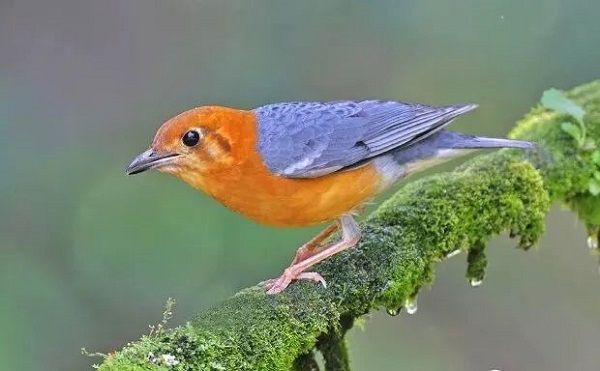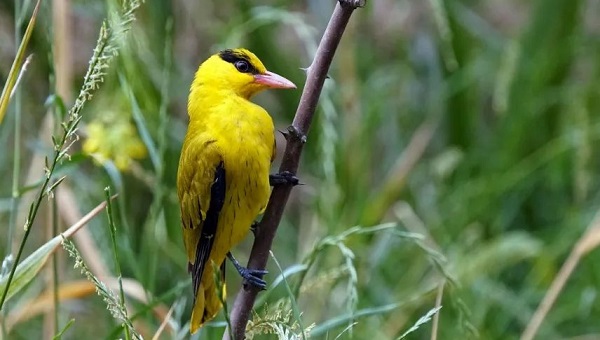New bird species discovered at Haizhu Wetland
At Guangzhou Haizhu Wetland, an important urban bird-watching site, orange-headed thrush and black-naped oriole were recently sighted for the first time, increasing the total number of bird species in the wetland to 193.

An orange-headed thrush. [Photo/WeChat account: gzhzfb]
The orange-headed thrush (Geokichla citrina) is a medium-sized member of the thrush family. It has an orange-chestnut head, neck, and underparts, and blue-grey or olive-grey upperparts. Its feet are orange-yellow or fleshy-yellow. The birds mainly inhabit forests in low mountains and foothills, preferring dense evergreen broad-leaved forests as well as secondary forests, bamboo forests, and small patches of forest near farmland. Orange-headed thrushes are shy by nature and often hide in shrubs, mimicking the calls of other bird species.

The overall plumage of the male bird is bright yellow. [Photo/WeChat account: gzhzfb]
The black-naped oriole (Geokichla citrina Oriolus chinensis) is a species in the oriole family. Male birds are bright yellow, while the plumage of females is duller. They mainly inhabit broad-leaved forests and mixed forests, preferring mountainous areas and places near water bodies. Black-naped orioles often move alone or in pairs in the canopy layer of trees, producing loud and varied calls, capable of imitating the complex songs of other birds. They feed on insects and are beneficial to agricultural and forestry production.
Their presence not only enriches the ecological environment of the wetland, but also provides opportunities for research and conservation of these birds.
All rights reserved. Presented by China Daily

